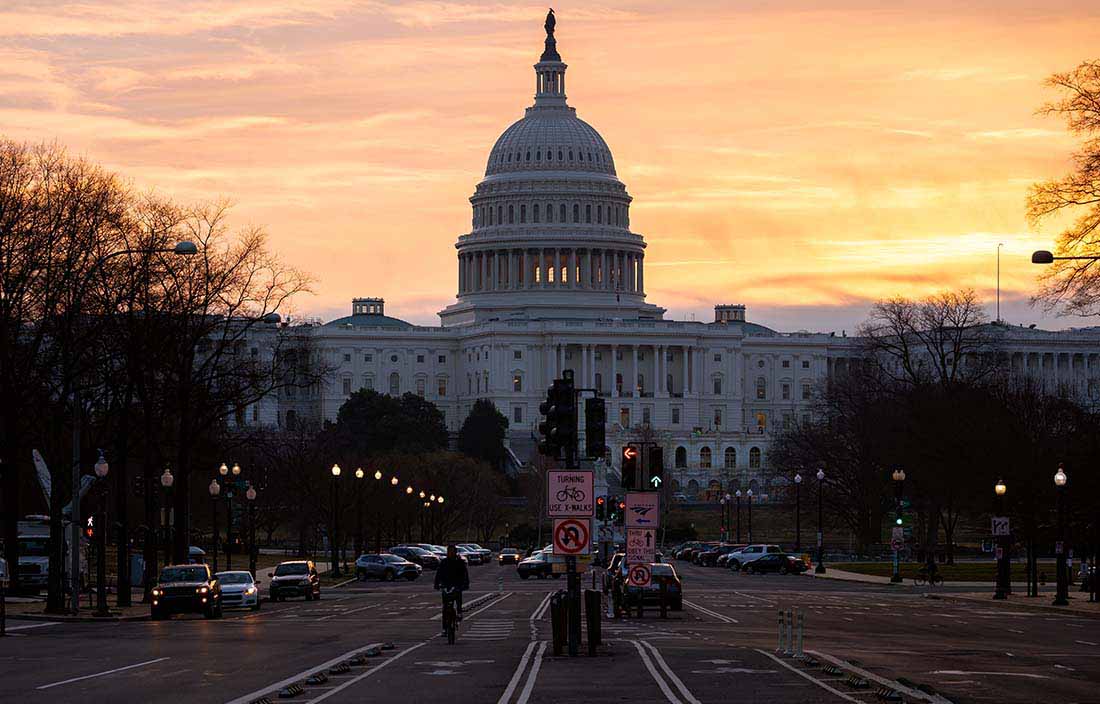Surface Transportation Act of 2015: Tax provisions
An eleventh-hour temporary extension of federal highway and transportation spending is partially paid for by new tax compliance requirements. The Surface Transportation and Veterans Healthcare Choice Improvement Act of 2015 (H.R. 3236) was approved by the House, 385 to 34, on July 29, and the Senate on July 30, by a 91-4 margin.
This stop-gap bill changes the filing deadlines of certain returns, modifies mortgage reporting, clarifies the six-year statute of limitations in the case of overstatement of basis, and requires consistency between estate tax value and income tax basis of assets acquired from a decedent. The bill also provides that employees with TRICARE or VA coverage may be exempted from the Affordable Care Act’s employer shared responsibility requirements and clarifies veterans’ eligibility for a health savings account (HSA).
President Obama immediately signed the bill into law on July 31 as soon as it reached the White House to avoid any lapse in highway and transportation spending.
Impact
Lawmakers from both parties wanted to offset the cost of the short-term highway bill without raising taxes, so they turned to “tax compliance” measures for revenue. The tax compliance measures are projected to generate approximately $5 billion in revenues over 10 years.
Impact
Because the stop-gap bill is temporary with regard to highway and transportation funding (scheduled to sunset October 29, 2015), the House and Senate will need to revisit this funding when Congress returns from its August recess. The Senate is preparing a multi-year highway bill (H.R. 22), which could serve as a blueprint for a longer extension. Depending on Congress’ fall agenda, a multi-year bill could transform into a “Christmas Tree” bill, including unrelated provisions, such as a package of tax extenders.
Comment
The stop-gap bill does not include a controversial proposal to revive private collection of tax debts. The privatization proposal was similar to one that Congress authorized several years ago. Another controversial proposal, to revoke or deny a U.S. passport in the case of certain unpaid taxes, also was removed from the final bill.Return due dates
Under the stop-gap bill, the due date for partnerships to file Form 1065, U.S. Return of Partnership Income and Schedule K-1s, Partner’s Share of Income, will move from April 15 to March 15 (or to the 2 ½ months after the close of its tax year). This will be the same filing deadline now in place for S corporations.
Impact
The shift to a March 15 deadline will better enable partners, like current S corporation shareholders, to receive their Schedules K-1 in time to report that information on their Form 1040 before its April 15 due date. Many partners are now forced to file for a six-month extension to file their Form 1040s.
The stop-gap bill also changes the filing deadline for regular C corporations from March 15 (or the 15th day of the 3rd month after the end of its tax year) to April 15 (or the 15th day of the 4th month after the end of its tax year). One exception: For C corporations with tax years ending on June 30, the filing deadline will remain at September 15 until tax years beginning after December 31, 2025, when it will become October 15.
Further, an automatic six-month extension will be available for C corporations, except for calendar-year C corporations through 2025, during which an automatic five-month extension until September 15 will generally apply. The stop-gap bill also instructs the IRS to modify regulations to provide for a variety of extensions-to-file rules, including, among others, a 6-month extension of Form 1065 to September 15 for calendar-year partnerships; and 5 ½ months ending September 30 for calendar-year trusts filing Form 1041.
Impact
The changes to the filing deadlines are generally applicable to returns for tax years beginning after December 31, 2015. For calendar-year taxpayers, that means the new deadlines will first apply to returns filed in 2017.
Impact
Many taxpayers and tax professionals have long advocated for these changes to return due dates. These staggered due dates were recommended not only to enable taxpayers to receive Schedule K-1 information in time to meet their initial filing deadlines. They also help even out the workflow faced by tax preparers both in dealing with initial deadlines and with extensions. Further, the revisions are expected to contribute to a reduction in the need for extended and amended individual income tax returns.
The bill also aligns the FBAR (Report of Foreign Bank and Financial Accounts) due date with the due date for individual returns, moving it from June 30 to April 15. The bill instructs the IRS to modify existing regulations to reflect the changes to tax return filing deadlines.
Mortgage reporting
Under current law, mortgage servicers are generally required to report to the IRS (Form 1098, Mortgage Interest Statement) certain information. The stop-gap bill imposes additional reporting, including the amount of the outstanding principal balance, the address of the property, and the loan origination date.
Impact
The modifications are intended to boost compliance but also impose new burdens on mortgage servicers. To give mortgage servicers time to reprogram their systems for the new reporting requirements, the bill applies to returns and statements the due date for which (determined without regard to extensions) is after December 31, 2016.
Comment
In June, President Obama signed the Trade Preferences Extension Act of 2015, which increased the penalties for filing Form 1098 with incorrect information.
Six-year limitation period for overstatement of basis
In Home Concrete, 2012-1 ustc ¶50,315, the U.S. Supreme Court held that an overstatement of basis does not result in an omission of income for extended statute of limitations (SOL) purposes. The stop-gap bill provides that the six-year limitations period applies where any overstatement of basis results in a substantial omission (in excess of 25 percent) of gross income stated in the return.
Impact
This legislative override of the Supreme Court’s decision in Home Concrete is effective for all returns for which the normal assessment period remained open as of the date of enactment (July 31, 2015), and for returns filed after that date.
Comment
Under Code Sec. 6501(a), the IRS ordinarily must assess a deficiency against a taxpayer within three years after the return is filed. Code Sec. 6501(e)(1)(A) extends the three-year period to six years if a taxpayer “omits from gross income an amount properly includible therein” which exceeds 25 percent of the amount of gross income shown on the return.
Stepped-up basis conformity
The stop-gap bill generally requires that the fair market value determination that sets the basis in any property acquired from a decedent be consistent with the value as determined for estate tax purposes. Executors of large estates (those large enough to require a federal estate tax return) will be required to disclose in statements to the IRS and the beneficiary information identifying the value of each interest received as reported on the estate tax return. Any underpayment of tax due to understated basis under this provision would be subject to a 20 percent accuracy-related penalty.
Impact
A low value of an asset reduces the estate tax, but a high value helps the beneficiary receive a higher “stepped-up” basis, thereby yielding lower taxable capital gain when the asset is eventually sold. The stop-gap bill is designed to prevent beneficiaries from overstating the value of an item of inherited property at the date of inheritance on their income tax return years later when the property might be sold. The provision is effective for property with respect to which an estate tax return is filed after July 31, 2015.
Comment
President Obama, in his recent proposal, “A Simpler, Fairer Tax Code That Responsibly Invests in Middle Class Families” (January 17, 2015), stated, “The largest capital gains loophole – perhaps the largest single loophole in the entire individual income tax code – is a provision known as ‘stepped-up basis’.” The stop-gap bill does not address the continued use of the stepped-up basis rule; it only prevents “inaccuracies” in its use due to mismatches between estate value and basis for later capital gains calculations.
Affordable Care Act
The Affordable Care Act requires applicable large employers (ALEs) to make a shared responsibility payment if they do not provide minimum essential coverage, among other criteria (the “employer mandate”). An ALE generally means, with respect to a calendar year, an employer who employed an average of at least 50 full-time employees on business days during the preceding calendar year. The stop-gap bill provides that an individual is not taken into account as an employee for the month if the individual has medical coverage for the month under a program for members of the U.S. Armed Forces (TRICARE) or a VA healthcare program.IMPACT. This provision may be applied retroactively, to months beginning after December 31, 2013.
Comment
For 2015, employers with at least 50 but fewer than 100 full-time employees, including full-time equivalent employees, may be eligible for transition relief from the employer shared responsibility requirements. Small employers, ones with fewer than 50 full-time employees or a combination of full-time and part-time employees that is equivalent to fewer than 50 full-time employees, are permanently exempted from the employer mandate.
Comment
Proposals to exempt public school employees, individuals with disabilities and others from being counted as part of the full-time employee threshold were not included in the final bill.
Excess pension assets
The Moving Ahead for Progress in the 21st Century Act (MAP-21) allowed employers to transfer excess pension assets to fund retiree health benefits and retiree life insurance. The stop-gap bill extends this treatment for four more years, through 2025. In doing so, the stop-gap bill picks up an additional $172 million in revenue.
Veterans
The stop-gap bill provides that a veteran’s eligibility to contribute on a pre-tax basis to a health savings account (HSA) is not affected by receipt of medical care from the VA for a service-connected disability.
Alternative fuels
The Tax Code imposes an excise tax on gasoline, diesel, kerosene, and certain alternative fuels. The stop-gap bill cuts excise fuel taxes on liquefied natural gas (LNG) and liquid propane used as highway motor fuels at a $90 million cost. Starting in 2016, it will uniformly impose taxes on liquefied natural gas (LNG), liquefied petroleum gas (LPG), and compressed natural gas (CNG) on an energy-equivalent basis, which effectively lowers taxes on liquefied petroleum gas from 18.3 cents to 13.2 cents per gallon and on liquefied natural gas from 24.2 cents to 14.1 cents per gallon.
Extensions
The stop-gap bill extends expenditure authority for the Leaking Underground Storage Tank Fund and the Sport Fish Restoration and Boating Trust Fund.
View the full alert with images here >>
![]()
The information provided in this alert is only a general summary and is being distributed with the understanding that Plante Moran is not rendering legal, tax, accounting, or other professional advice, position, or opinions on specific facts or matters and, accordingly, assumes no liability whatsoever in connection with its use.




